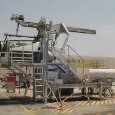-
Posts
584 -
Joined
-
Last visited
-
Days Won
10
Content Type
Profiles
Forums
Store
Gallery
Downloads
Calendar
C-130 Hercules News
Everything posted by pjvr99
-
GTCP85-180L is valid model no for E and H model aircraft, as well as the modified GTC aircraft. Part numbers differ because the -185L used in the upgrade has intake screen rotated requiring relays and other parts to be repositioned. This means changes to the wiring harness and fuel, oil and pneumatic lines. GTCP85-180L come with part numbers 381116-1- 3/5/6/7/8/9
-
Left hand harness ??
-
Coordinator first thing to check, pot is probably loose. After that, take a serious look at thermocouple harnesses. We had a lot of similar problems last few years that were traced there. Also take a good look at the gimbal bushings, and ALL control rod-end bearings. Also check condition of the prop universal joint Let us know what you found
-
1 person can do it in an hour or so
-
At 7 volts it sounds like you may have one or more dead cells, in which case no charging would take place, even if the relay did close.
-

No 4 engine wind down when selected to LSGI
pjvr99 replied to aziizurrahman's topic in C-130 Technical
What is the LSGI TIT when stable after start? Also ff and Torque? If you shut down the engine and restart immediately, what are torque, TIT and FF? What are NGI torque, TIT and ff? What are ff, torque and TIT at 900°C? What are OAT and pr altitude during these actions? Can you run a direct reading Guage for CDP during these checks? I don't see fuel nozzles changed on your list; while you're doing that, put borescope in and check combustion cans. -
Man on stand, but I can see where a thermal camera would be useful at higher power settings
-
Ok that makes sense, although the 200pph fuel flow seems way too high. Good job
-
https://www.wordsmyth.net/?rid=58422 That abouts as good an explanation as any, but yes, the point at which fuel/air mix is ignited and sustained combustion occurs indicated by a rapid rise in TIT, fuel flow, rpm
-
I'm with lquest - out of rig prop can do some wierd stuff, but if within limits ignore and continue. Can you give actual numbers, ie. OAT, air pressure, ff, torque, TIT, RPM?
-
Depends on the operator how they want to do line maintenance. Civilian operators don't have APG, engines or props - only mechanics. Some military would only have engines and Airframes on flightline
-
200 to 300 pph iirc
-
Ah ok, that makes sense
-
Dont know about using pumps for qty checks, just use dipstick in the overwing filler ports
-
Looks like a stuck bleed valve Bob. Check 6 and 12 o'clock positions
-
Sorry Bob, no. cycles are not recorded, only flight hours. however they were well within limits. Echo NATOPS: is this same engine or turbine? Have you run this engine direct off wing on the cell? is this happening on same aircraft? what position?
-
Are these once per turbine, or do you have repeat offenders? If repeat offenders, pull the turbine apart and check the 2nd/3rd stage rotors and the spacer discs. We had several spacers disintegrate without any indication other than the cracked support cases. We only opened the turbines because I rejected them from the test cell for out of limits vibration on the analyzer
-
Engine will continue starting cycle as long as starter valve is open, however TD system protection will not be available, fuel pumps will drop back to series operation. Once starter valve closes, rpm will decay and TIT rise until engine flames out
-
Bob, I haven't a clue. Going to try get hold of the squadron next week. Have more info then. I saw 401 start up and taxi out as I was leaving the show yesterday. Thanks Bob
-
A couple of visitors to AAD 2016 at AFB Waterkloof in Pretoria, South Africa
-
T.O. 2J-T56-56 ADH and RGB magplugs are covered completely Bob. Experience helps a lot too. Only thing I always made a point of doing is getting the ground lead of the multimeter onto the body of the mag plug.
-
T56-56 shows what's good and what's not. Mag plugs are checked every bpo. Fuzz and slivers less than 1/16" diameter are not a problem. During break-in on a new RGB slivers are commonly found. Chunks of any size are reason for concern, and require further investigation or power plant removal. Using a multimeter a resistance of less than 20000 ohm (20k) requires magplugs be removed and visually inspected. On my test cell I had a system of LEDs that were hooked up with crocodile clips - 1 for each plug. I can't tell you how many times that saved us tearing up an engine
-
looks like #1 lab seal blown, or maybe failure of extension shaft seal where torqmeter housing bolts on. Cracked diffuser lines (#2 & #3 bearing scavenge) will show up as 2 to 3 gallon low during operation, but full tank after shut down. Wet bleeds can only come from the front intake area
-
If one or more thermocouples or leads are broken, the TD system will respond by PUTting more fuel to match coordinator input. 1 thermocouple is worth 18 to 22 degrees C at take off.
-
If memory serves, 0 to 50 is almost straight extension simply increasing wing area and lift. 50 to 100 increases lift through the slot to compensate for drag from the increased down movement. Don't remember any specific angle for a given postion

